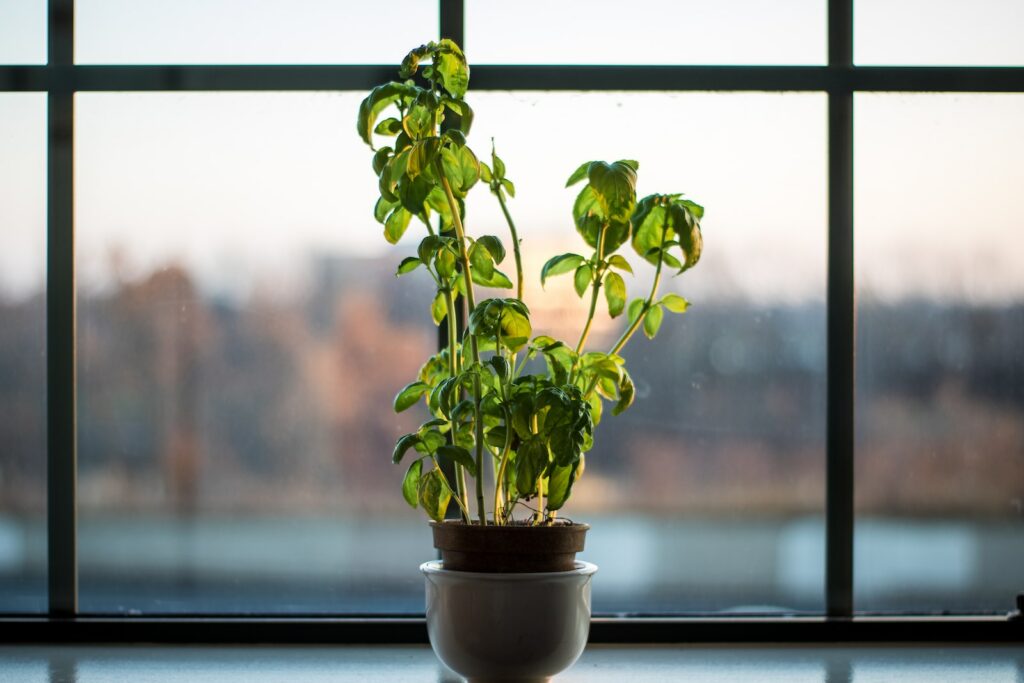
Basil plants are a popular herb used in various cuisines around the world. They are easy to grow and maintain, making them a favorite among home gardeners. However, many people wonder how long these plants can live and produce fresh leaves.
The lifespan of a basil plant can vary depending on various factors such as the growing conditions, the type of basil, and the care provided. Typically, basil plants can live for up to two years if they are well taken care of. However, some varieties may have a shorter lifespan and may only last for a year.
To ensure the longevity of a basil plant, it is important to provide it with the right growing conditions. This includes giving it enough sunlight, water, and nutrients. Proper pruning and harvesting techniques can also help extend the plant’s life and promote healthy growth.
Table of Contents
Understanding Basil
Basil (Ocimum basilicum) is an annual herb that belongs to the mint family. It is native to tropical regions of central Africa and southeast Asia but is now grown in many parts of the world. Basil is a popular herb in many cuisines, including Italian, Thai, and Vietnamese. It is widely used in dishes such as pasta sauces, pesto, and soups.
Basil has a strong aroma and taste that is often described as sweet, spicy, or peppery. The flavor of basil can vary depending on the variety and growing conditions. For example, Thai basil has a stronger licorice flavor than sweet basil.
Basil plants typically grow to be about 12 to 24 inches tall and have green leaves that are about 1 to 3 inches long. The leaves are often used fresh or dried in cooking. Basil is also used in traditional medicine for its potential health benefits, such as reducing inflammation and improving digestion.
In terms of lifespan, basil plants are annuals, meaning they complete their life cycle in one growing season. However, with proper care, basil plants can live for several months and produce multiple harvests. It is important to keep basil plants well-watered and to pinch off any flowers that appear, as this can help prolong the plant’s lifespan.
Overall, basil is a versatile and flavorful herb that can be used in a wide variety of dishes. Whether you are growing basil in your garden or using it in your cooking, understanding the characteristics and flavor profile of this herb can help you get the most out of it.
Classification of Basil
Basil is a popular herb that belongs to the mint family. It is a diverse plant with over 60 known species and many more cultivars. The different types of basil are classified based on their growth habits, appearance, and flavor. In this section, we will discuss the most common types of basil and their classification.
Annual and Perennial Basil
Basil plants are classified into two main categories: annual and perennial. Annual basil plants complete their life cycle in one growing season and die after producing seeds. Perennial basil plants, on the other hand, can live for several years and continue to produce new growth each season.
Sweet Basil
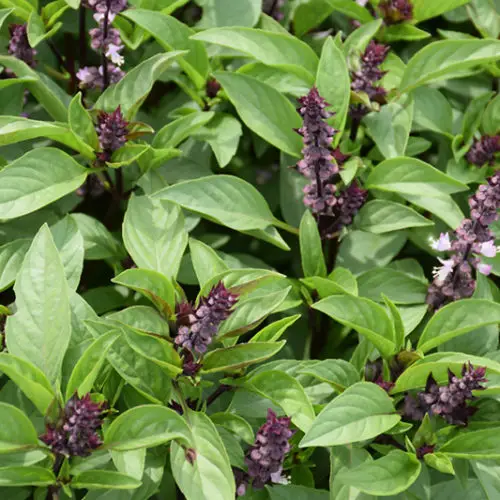
Sweet basil, also known as Genovese basil, is the most common type of basil. It has a classic basil flavor and is used in a variety of dishes, including pesto, soups, and salads. Sweet basil is an annual plant that grows up to 2 feet tall and has large, green leaves.
Purple Basil
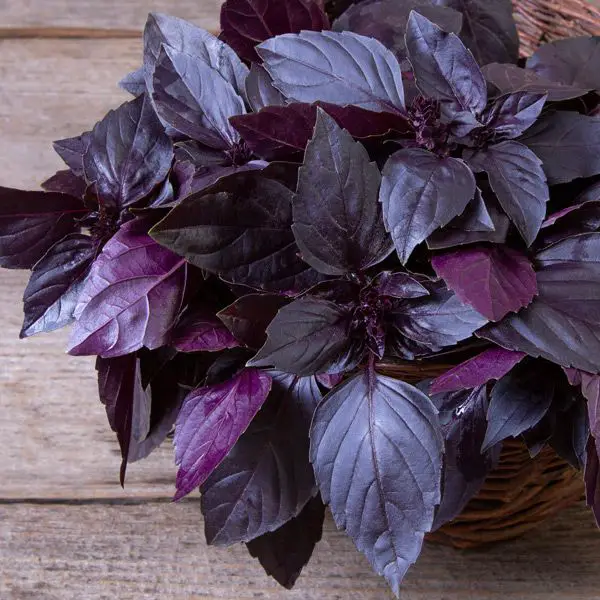
Purple basil is a variety of sweet basil that has purple leaves and stems. It has a milder flavor than sweet basil and is often used as a garnish or to add color to dishes. Purple basil is an annual plant that grows up to 2 feet tall.
Thai Basil
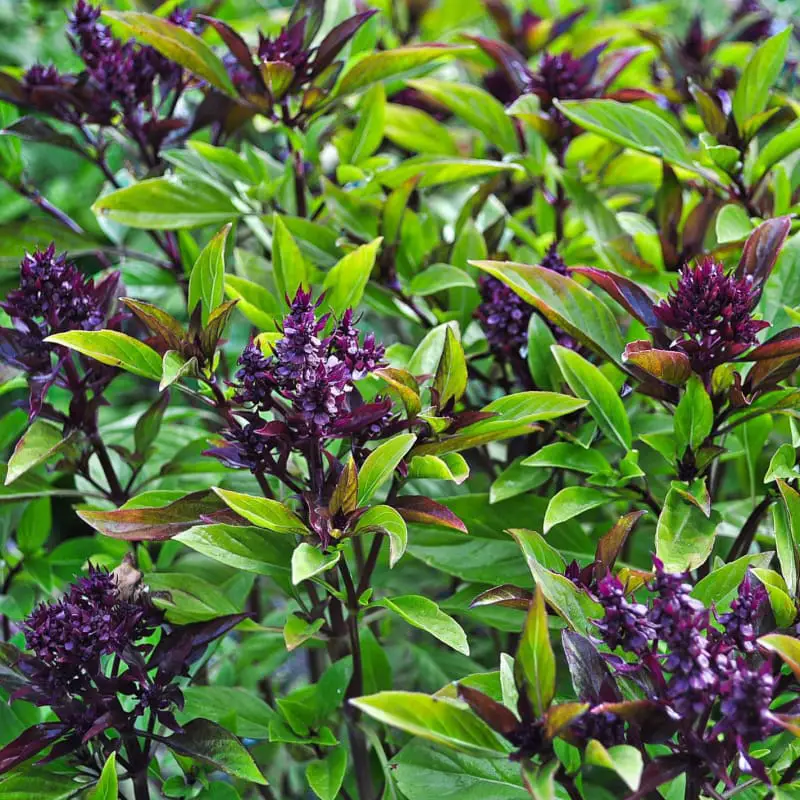
Thai basil is a type of basil that is commonly used in Southeast Asian cuisine. It has a licorice-like flavor and is often used in curries, stir-fries, and soups. Thai basil is an annual plant that grows up to 2 feet tall and has purple stems and flowers.
Lemon Basil
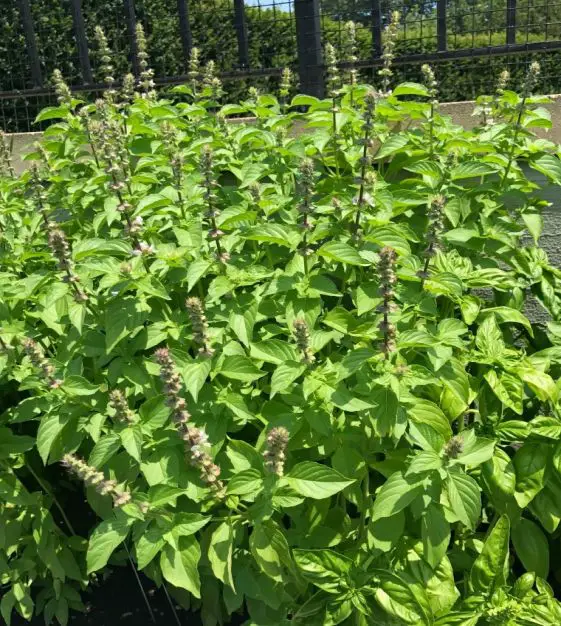
Lemon basil is a type of basil that has a lemony flavor and aroma. It is often used in teas, salads, and marinades. Lemon basil is an annual plant that grows up to 2 feet tall and has green leaves.
Cinnamon Basil
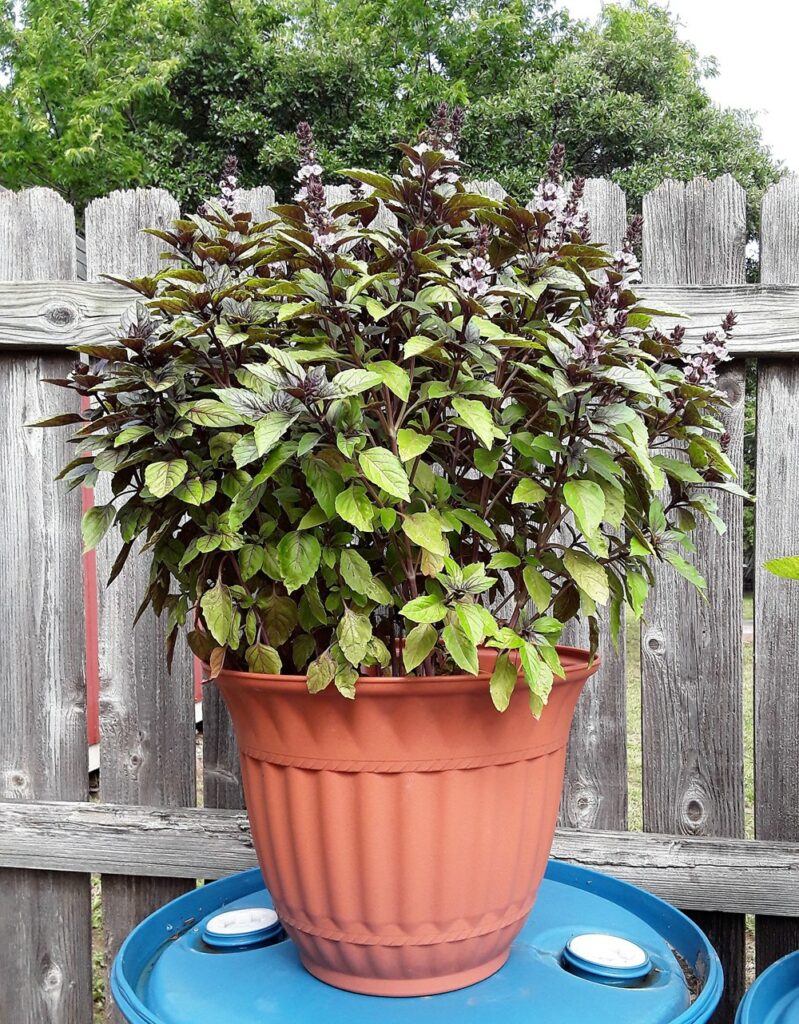
Cinnamon basil is a type of basil that has a spicy, cinnamon-like flavor and aroma. It is often used in desserts, teas, and potpourri. Cinnamon basil is an annual plant that grows up to 2 feet tall and has green leaves.
In conclusion, basil is a diverse plant with many different types and cultivars. The most common types of basil include sweet basil, purple basil, Thai basil, lemon basil, and cinnamon basil. Basil plants are classified as annual or perennial based on their life cycle.
Ideal Growing Conditions
When it comes to growing basil plants, providing the ideal growing conditions is crucial for their longevity and productivity. In this section, we will discuss the various factors that contribute to the ideal growing conditions for basil plants.
Light Requirements
Basil plants require a lot of light to grow. They thrive in full sun or direct sunlight for at least 6 hours a day. If you are growing basil indoors, you can use artificial lighting to provide the necessary light. Place the light source about 6 inches above the plant and keep it on for 12-16 hours a day.
Temperature and Climate
Basil plants prefer warm climates and do not tolerate frost or cold weather. The ideal room temperature for basil plants is between 60-90°F. If you are growing basil outdoors, wait until after the last frost to plant them. During the winter months, you can grow basil indoors, but make sure the temperature remains above 50°F.
Soil and Watering Requirements
Basil plants require well-draining soil that is moist but not waterlogged. The soil pH should be between 6.0-7.5. Water the plants regularly, but avoid overwatering as it can lead to root rot. Allow the soil to dry out slightly between watering.
Planting Location
Basil plants can be grown both indoors and outdoors. If you are growing basil outdoors, choose a sunny spot with well-draining soil. If you are growing basil indoors, place the plant near a sunny window or use artificial lighting.
Nutritional Needs
Basil plants require regular fertilization to thrive. You can use a balanced fertilizer or compost to provide the necessary nutrients. You can also add cottonseed meal to the soil to provide additional nitrogen.
Space and Drainage
Basil plants require adequate space to grow and spread out. If you are growing basil in pots or containers, make sure they are at least 6 inches deep and have good drainage holes. If you are growing basil outdoors, space the plants about 12-18 inches apart to allow for proper airflow and drainage.
Overall, providing the ideal growing conditions for basil plants will ensure their longevity and productivity. By following the guidelines outlined in this section, you can grow healthy and flavorful basil plants in your garden or indoor space.
Planting and Germination
From Seeds
Basil plants can be started from seeds indoors or directly in the ground outside. If starting indoors, it is recommended to start the seeds 6-8 weeks before the last expected frost in the spring. The seeds should be planted in a well-draining soil mix and kept moist until they germinate.
To germinate basil seeds, they should be kept in a warm and humid environment, ideally around 70-75°F (21-24°C). This can be achieved by covering the seed tray with plastic wrap or using a seed-starting heat mat. Once the seeds have sprouted, they should be gradually acclimated to cooler temperatures and brighter light before being transplanted outside.
Transplanting
When transplanting basil seedlings, it is important to choose a sunny location with well-draining soil. The soil should be amended with compost or other organic matter to provide the plants with adequate nutrients.
Basil plants should be spaced about 12-18 inches (30-45 cm) apart to allow for proper air circulation and prevent overcrowding. It is also recommended to pinch off the top few leaves of the seedlings before planting to encourage bushier growth.
When transplanting, it is important to handle the seedlings carefully and avoid damaging the roots. Once planted, the seedlings should be watered thoroughly and kept moist until they become established.
Overall, planting and germinating basil seeds requires patience and attention to detail, but can result in a bountiful harvest of fresh herbs.
Basil Care and Maintenance
Basil plants are relatively easy to care for and maintain, but they do require some attention to thrive. Here are some tips for keeping your basil healthy and productive.
Pruning and Pinching
Pruning and pinching off the tips of basil plants is essential for maintaining a bushier plant. By removing the top of the plant, the basil will grow two new branches from the sides of the stem, which will create a fuller plant. Pruning also helps to prevent the plant from getting too tall and leggy. It is recommended to prune the basil plant every two to three weeks.
Dealing with Pests and Diseases
Basil plants can be susceptible to pests like aphids and other insects, as well as fungal diseases like root rot. To prevent pests, it is important to keep the plant clean and well-maintained. Regularly inspect the leaves for any signs of damage or infestation and remove any affected leaves. For fungal diseases, avoid over-watering the plant and make sure it has good drainage. If the plant does get infected, remove the affected leaves immediately to prevent the disease from spreading.
Overwintering
Basil is an annual plant, which means it typically only lives for one growing season. However, with proper care, it is possible to overwinter basil plants and keep them alive for a second season. To overwinter basil, bring the plant indoors before the first frost and keep it in a sunny location. Water the plant sparingly and avoid fertilizing it during the winter months. In the spring, prune the plant back to encourage new growth.
Mulching
Mulching is a great way to help retain moisture in the soil and keep the plant healthy. Apply a layer of mulch around the base of the plant, being careful not to cover the stem. This will help to regulate soil temperature and prevent the soil from drying out too quickly. Organic mulches like shredded leaves or straw are ideal for basil plants.
Overall, with proper care and maintenance, basil plants can live for several months and provide a steady supply of fresh herbs for cooking and other uses.
Harvesting and Use
Harvesting Techniques
Basil plants can be harvested once they have reached a height of 6-8 inches and have developed several sets of leaves. The best time to harvest basil is in the morning when the leaves are at their freshest. To harvest, simply cut the stem of the plant just above the second set of leaves from the bottom. This will encourage the plant to grow back fuller and bushier.
It is important to avoid harvesting more than one-third of the plant at a time, as this can damage the plant and reduce its overall lifespan. Regular harvesting, however, will encourage the plant to produce more leaves and extend its lifespan.
Culinary Uses
Basil is a versatile herb that can be used in a variety of dishes. Its tender leaves have a sweet, slightly peppery flavor that pairs well with many other ingredients. Basil is commonly used in Italian cuisine, particularly in pesto sauce, but it can also be used in salads, soups, and stews.
When using basil in cooking, it is best to add it towards the end of the cooking process to preserve its flavor and aroma. Basil can also be used as a garnish to add color and flavor to a dish.
Preserving Basil
Basil can be preserved for later use by drying or freezing. To dry basil, simply hang the harvested stems upside down in a warm, dry place for several days until the leaves are brittle. Once dry, the leaves can be crumbled and stored in an airtight container.
To freeze basil, wash and dry the leaves, then chop them finely. Place the chopped basil in an ice cube tray and fill with water. Once frozen, the basil cubes can be stored in a freezer bag for up to six months.
Overall, basil is an edible herb with aromatic leaves that can be harvested and used in a variety of dishes. By using proper harvesting techniques and preserving methods, the lifespan of a basil plant can be extended, allowing for continued use in the kitchen.
Basil Varieties and Their Lifespan
Annual Varieties
Annual basil varieties, such as Genovese basil, Thai basil, and Lemon basil, complete their life cycle in a single year. These varieties grow quickly and produce abundant foliage, which makes them a popular choice for culinary use. Annual basil plants typically live for 4 to 6 months, depending on the growing conditions and care provided. They are sensitive to cold temperatures and frost, and will not survive winter in most regions.
Perennial Varieties
Perennial basil varieties, such as Holy basil, African blue basil, and Greek basil, can live for several years with proper care. These varieties are hardier and more tolerant of cold temperatures than annual varieties, and can survive winter in some regions. Perennial basil plants may die back to the ground in winter, but will regrow from the roots in spring. They can live for 2 to 5 years or more, depending on the growing conditions and care provided.
Basil Lifespan
The lifespan of basil plants depends on several factors, including the variety, growing conditions, and care provided. Annual basil plants typically live for 4 to 6 months, while perennial basil plants can live for several years. To extend the lifespan of basil plants, it is important to provide them with proper growing conditions, such as well-draining soil, adequate sunlight, and regular watering. Pruning and harvesting the plants regularly can also help to promote healthy growth and prolong their lifespan.
Basil Reproduction
Basil is an annual herb that reproduces through seeds. In order to produce seeds, the plant must first go through the flowering and bolting stage.
Flowering and Bolting
When a basil plant reaches maturity, it will begin to produce small green flowers. These flowers will eventually turn into seed pods, which contain the basil seeds.
However, some gardeners prefer to prevent their basil plants from flowering and bolting, as this can cause the plant to become less flavorful. To prevent flowering and bolting, gardeners can pinch off the basil flowers as soon as they appear.
Roots and Branching
Basil plants have a shallow root system and can easily be propagated through cuttings. To propagate a basil plant, simply take a cutting from the plant and place it in water until roots begin to form. Once the roots have formed, the cutting can be planted in soil and will begin to grow.
Basil plants also have a tendency to branch out, which can be beneficial for gardeners who want to harvest more leaves from their plants. To encourage branching, gardeners can pinch off the top of the plant, which will cause it to grow two new branches.
Companion Plants
Basil is a great companion plant to many vegetables and herbs. It can help repel pests and improve the flavor of surrounding plants. Here are some plants that can be grown alongside basil:
- Tomatoes: Basil and tomatoes are a classic combination. They not only taste great together but also help each other grow. Basil can repel tomato hornworms and whiteflies, while tomatoes can help shade and protect basil from the sun.
- Peppers: Basil can also be grown alongside peppers. It can help repel aphids and spider mites, which are common pests for peppers.
- Eggplants: Similar to peppers, eggplants can benefit from growing with basil. Basil can help repel flea beetles and spider mites, which can damage eggplant leaves.
- Lettuce: Basil can be grown alongside lettuce to help repel aphids and improve the flavor of the lettuce.
- Beans: Basil can also be grown alongside beans to help repel bean beetles and improve the flavor of the beans.
Overall, basil is a great companion plant that can benefit many different types of vegetables and herbs. It can help repel pests and improve the flavor of surrounding plants.
Conclusion
In conclusion, basil plants have a relatively short lifespan, typically lasting for one growing season. However, with proper care and maintenance, they can live for up to two years.
Factors such as temperature, humidity, soil quality, and lighting can all affect the lifespan of a basil plant. It is important to provide the plant with adequate sunlight, water, and nutrients to ensure its longevity.
Regular pruning and harvesting can also help extend the life of a basil plant. By removing the flowers and regularly harvesting the leaves, the plant can focus its energy on producing new growth rather than reproducing.
While basil plants may not live as long as other perennial herbs, they are a versatile and flavorful addition to any garden or kitchen. With the right care, basil plants can provide a bountiful harvest of fresh herbs for several months, making them a worthwhile investment for any home gardener.